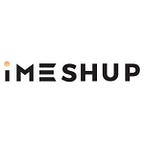We will be implementing something cool into iMeshup’s uploader: soon, your textures will automatically map onto your models!
Textures can be rough — no pun intended. Getting your image files to show up correctly on your meshes is no small feat. We want to make sure all of the hard work you put in on your desktop modeling software will seamlessly be ready-to-go in iMeshup’s viewer and editor. It will only require you to follow a few key file naming conventions, hit upload, and viola! Your models will be look great as soon as they’re on the cloud. Here’s how you’ll be able to get your textures looking perfect:
Names are everything!
- Name matching is especially important if you have multiple materials in your scene. In order to ensure that our 3D editor merges objects correctly, make sure each material has a unique name. For this, it’s best to use Latin letters and numbers (avoid special characters.)
- Use the following conventions listed in the table below. This helps our uploader optimize settings and apply your textures to your model’s shader slots. ‘MaterialName_suffix.extension’ is the file name format we recommend. Example: textures for ‘Material1’ could be named ‘Material1_diffuse.png,’ or ‘Material1_metallic.png.’
- Remember: it’s important to avoid names with special characters, especially periods, underscores, and hyphens. Avoid material names that are full or partial matches within a scene: for example, ‘floor’ and ‘woodfloor.’
If your model only has one material, textures will be applied based on the name of the shader they match — the material name or the position of the string in the name of the image file won’t be considered.
Make sure it’s all there.
- Model file(s): Your 3D creation can be in one of many formats: .dxf, .obj, .3ds, .dae, .abc, .fbx, or .zip. The iMeshup engine’s native format is glTF –a common choice for projects in the 3D industry with wide support. All the other formats, such as 3ds, .dae and .fbx are imperceptibly converted within the system.
- Texture file(s): Upload textures with your model file (in formats like .blend or .fbx, for example, or image files), either in the same folder or directory or in a sub folder or directory. You can also choose to embed them into the model file itself. If you follow our naming conventions and have made sure your model properly references your textures, they will be automatically applied to your model.
What do you think?
We don’t want your beautiful textures to be wonky, buggy, or straight-up MIA! Do you think using these conventions is a good idea? Let us know: reach out to us if you foresee any issues, problems, bugs, quirks, snafus, or mysterious hooded figures.
We live for your feedback!
